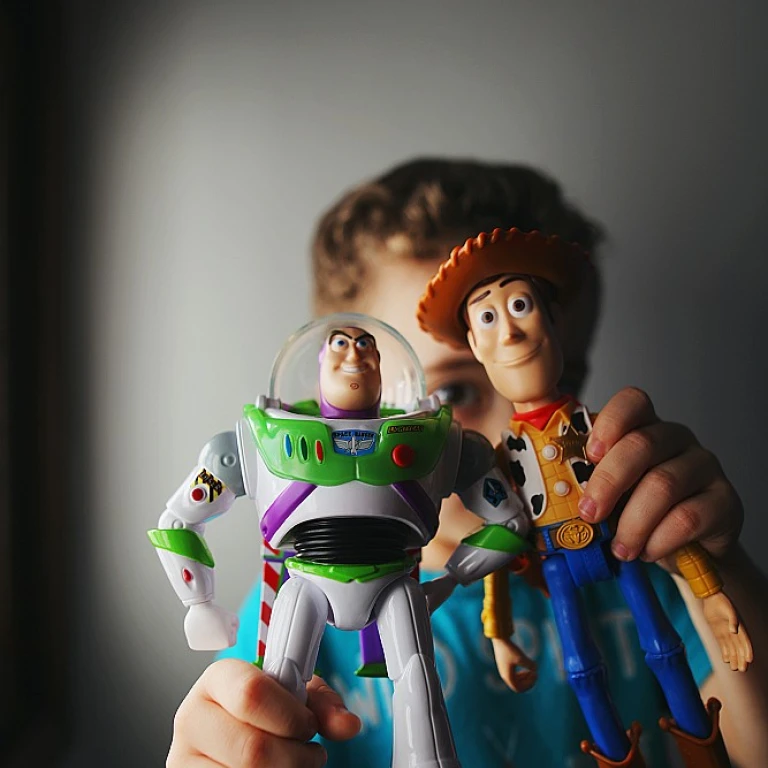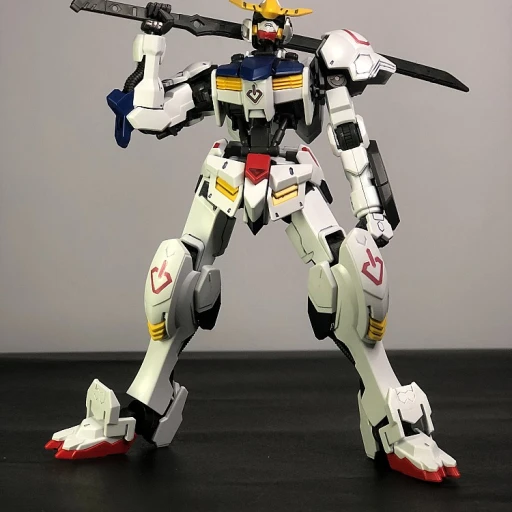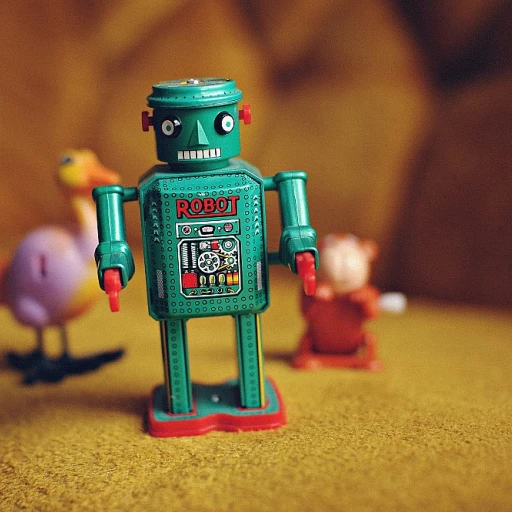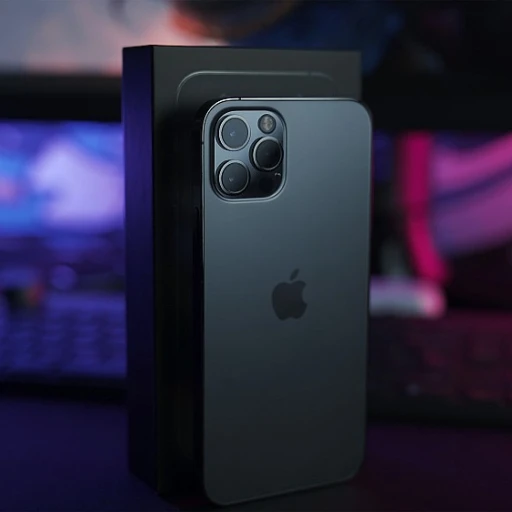Exploring the luxury tech gadget market
Dipping toes into the luxury tech gadget market
Welcome to a fascinating look at the luxury tech gadgets market, where groundbreaking innovation meets opulence. If you've ever dreamed of owning a device that screams sophistication and utility, you aren't alone. Experts estimate this market is growing exponentially, with a report from Grand View Research revealing the luxury tech market was valued at approximately $22.57 billion in 2020 and expected to expand at a compound annual growth rate (CAGR) of 12.3% between 2021 and 2028. ### the nexus of tech and luxury When considering luxury tech gadgets, you're likely imagining top brands like Apple, Bang & Olufsen, and Louis Vuitton. These brands don't just sell products; they sell a lifestyle. According to J.P. Gownder, a principal analyst at Forrester Research, luxury tech items combine high performance with aesthetically pleasing designs that appeal to their affluent target audience. ### consumer behavior and spending habits In the age of conspicuous consumption, it's important to understand that luxury buyers expect nothing but the best. A survey by McKinsey found that 50% of luxury consumers consider themselves to be early adopters of new technology. They crave the novelty factor and are willing to pay a premium for it. This aligns with the insight from Nicola Chilton, a luxury industry consultant, who emphasizes that, “Luxury tech buyers are less price-sensitive; they value the exclusivity and advanced features of the product.” ### knotting customer experience with high-end products Let's delve into some examples to illustrate how these luxury tech brands masterfully intertwine tech prowess with luxury. Apple's partnerships for exclusive Hermes Apple Watch bands and Bang & Olufsen's Beoplay H95 headphones highlight meticulously crafted designs that don't compromise on superior tech performance. ### nuances that set apart luxury tech gadgets Quality craftsmanship is a hallmark. These gadgets offer more than utility—they reflect status, taste, and affluence. Leading luxury tech items often come with personalized services and customizable options. For instance, Louis Vuitton’s Horizon Light Up speaker is not just an audio powerhouse but a stylish ornament that enhances living spaces. ### market insight: brands to watch Experts from Bain & Company point to brands like Montblanc and Porsche Design as emerging players in the luxury tech domain. Montblanc’s Summit 2+, a Google-powered luxury smartwatch, and Porsche Design’s Huawei Mate 20 RS exude sophistication and advanced features. Smart mirrors from Ceratec and the BRAVIA OLED TV from Sony also find a mention as state-of-the-art indulgences in this segment. ### the influence of initial words in luxury marketing Without giving away too much about other sections, it’s worth noting that initial words play a stellar role in luxury branding. Names like 'Horizon,' 'Summit,' and 'Beoplay' instantly evoke impressions of excellence. They form an indelible first contact point with the consumer, setting the tone for what follows. With markets expanding and consumer demands becoming more pronounced, these brands are continually innovating to outdo themselves. What's next? You'll have to explore further to see how these splurges are changing the landscape of consumer tech.The role of initial words in branding luxury tech
The power of a strong beginning in branding
Let's talk about the sensation that comes with uttering or even thinking of the name 'Apple.' It's not just a fruit anymore, right? It's instant, iconic. That's the magic of initial words—they're the opening note in a symphony, the first step onto a red carpet, a definitive starting point.
In luxury tech, the significance of these initial words can’t be overstated. According to a study by Interbrand, up to 75% of a brand's value is tied to its name. People tend to associate initial letters with specific traits: 'S' can suggest sleekness, 'B' can imply boldness. The context and articulation of these letters matter immensely in creating a powerful, lasting first impression.
Why initials make lasting impressions
When you're dealing with high-end tech gadgets, the product itself might rely on precision engineering, immaculate materials, and ground-breaking features. However, initial sounds in the name set the stage. “iPhone” starts with a vowel, and there's something undeniably sleek and elegant about it. Initial blends create intrigue and weight to the name: think of 'Galaxy' or 'Dyson.' Words in the initial position often leave the longest-lasting impact.
Keith Hollingsworth, a branding expert, notes that “initial words aren't just about memorability; they’re about creating an emotional starting point for the consumer. They are the cornerstone of the narrative.”
The consumer psychology of initial letters
Luxurious tech brands labored over initial letters because these tiny linguistic elements can significantly dictate consumer behavior. For instance, the initial letter 'A' is perceived positively more frequently than almost any other letter, according to a study by the Rotterdam School of Management. Similarly, initial sounds tied to luxury—like 'L' for Lexus or 'T' for Tesla—don't just sound good; they feel good, despite the more demure beginnings of names like Audi or Rolex.
Words in spin wheels and activities
In educational fields like speech therapy, initial words or sounds are fundamental in helping children and adults alike grasp speech language better. Tools like spin wheels and speaking cards often start with initial, blend or CVC words (consonant-vowel-consonant). They lay an organic foundation, permitting the articulation practice valuable for luxury brands in speech therapy, supporting both children and practitioners striving for accurate language articulation.
The luxury of initials in modern branding
What about controversies? Sometimes, brands struggle if the initial choice backfires. Imagine picking a name that happens to replicate a controversial acronym—talk about consumer backlash. The choice has to straddle a line between uniqueness and familiarity. Brands dedicated to special education and speech therapy consistently update their initial word lists to ensure they're valuable and practical.
Yet, underestimating the influence of initial words can be a misstep. Jonathan Turner, a marketing consultant, specifies, “It’s a balancing act. Choosing the wrong initial can sink a brand before it sets sail, while the right one propels it toward consumer resonance immediately.”
Innovative features of luxury tech gadgets
Showcasing high-end materials and craftsmanship
Luxury tech gadgets aren't just about performance, they're about the perfect blend of elegance and functionality. Take, for instance, the Fusionphone made by Vertu. Known for its hand-crafted detailing, each phone isn't merely assembled but meticulously built by a single artisan. Leather from the best tanneries, sapphire crystal displays, and precision-engineered titanium exude opulence.
The efforts to ensure exclusive premium quality extend to every realm of articulation, from design concept to final product. A survey by Luxury Society reveals that 78% of affluent consumers expect high-end materials in their tech gadgets, making it a critical factor in customer satisfaction and brand loyalty.
Cutting-edge technology embedded in tradition
Blending traditional luxury with ground-breaking tech, brands have carved out a niche that marries classic elegance with modern-day functionality. The Patek Philippe smartwatch stands as a gleaming example. Combining their Swiss watchmaking prowess with state-of-the-art health tracking features, they’ve delivered a gadget that respects tradition without sacrificing utility.
Experts like Nicole Georghiou from Deloitte underscore this trend, saying, “It's about finding that perfect balance. Customers want the latest tech, but they also crave the familiarity and esteem that traditional luxury brands bring.”
Personalized experiences
Customization is becoming an essential part of luxury tech gadgets. Companies offer bespoke options that allow buyers to tailor their gadgets to meet their personal taste and lifestyle needs. Louis Vuitton's Horizon Earphones, for example, offer customizable color and material options, maintaining the brand's hallmark of uniqueness while integrating top-tier sound quality.
Consumer research underscores that 67% of luxury tech buyers are willing to pay a premium for personalized products, driving the industry to adapt to these demands.
Seamless integration and connectivity
Leading edge luxury tech gadgets emphasize seamless integration into the user's life, focusing on connectivity and ease of use. Bang & Olufsen’s Beosound products exemplify this, providing the best sound quality while ensuring effortless integration with various devices and smart home setups.
The aim is to enhance everyday user experience by blending remarkable technology with the luxury element effortlessly. As noted by Janet Brage, a tech analyst, “Consumers don’t just want a beautiful product. They want it to make their lives easier without compromising on the luxury experience they’ve come to expect.”
Case studies: successful luxury tech gadgets
Apple and the luxury tech game
It's no surprise that Apple's foray into the luxury tech market has yielded massive success. The brand's attention to detail and sophisticated design have always been its hallmarks. A perfect case in point is the Apple Watch Edition. Launched in 2015, the Edition featured an 18-karat gold case and retailed for up to $17,000. This move helped Apple carve a niche for itself in the luxury market and showed the world that tech could be a symbol of status. According to a report by IDC, Apple commanded a 36.4% share of the global smartwatch market in 2021.
Tesla's premium appeal
Tesla's approach to luxury tech has been equally innovative. The Tesla Model S, for instance, is a blend of top-tier automotive engineering and cutting-edge technology. Featuring a sleek design combined with an advanced autopilot system, the car appeals to tech enthusiasts and luxury car buyers alike. A study by Statista revealed that tesla's revenue shot up from $117 million in 2010 to $31.5 billion in 2020, much of which can be attributed to its luxurious yet tech-savvy vehicles.
Dyson's innovative edge
James Dyson's brand, famous for its high-end home appliances, has successfully tapped into the luxury tech market. Dyson's Supersonic Hair Dryer, which retails for $399.99, promises a rapid drying time and minimal hair damage, continuing Dyson's tradition of innovation. With a global revenue of $7.6 billion in 2020, Dyson’s ventures into the premium tech market have proven lucrative.
Dyson's innovative edge
The diamond-studded BlackBerry Bold, released in 2009, was an example of a tech gadget taking luxury to another level. Manufactured by Amosu Couture, the smartphone was adorned with over 4,000 individual diamonds and a rear panel made of 18-karat gold. It sold for an eye-watering $240,000. Despite BlackBerry's decline in the general market, the BlackBerry Bold showed that there is always room for luxury tech.
Other luxury tech standouts
If you want to discuss luxury tech gadgets, Vertu can’t be ignored. Vertu, while not as mainstream today, was once synonymous with luxury mobile phones. Crafted with exotic materials such as alligator and ostrich leather and encrusted with precious metals and stones, Vertu’s phones served as status symbols. Another example is the Goldvish Le Million, which made headlines in 2006 as the world’s most luxurious phone, priced at $1.3 million. According to a Forbes report, the luxury smartphone market was valued at approximately $3.5 billion in 2020 and continues to grow.
The impact of initial words on consumer perception
How first impressions affect consumer choices
Ever noticed how luxury tech gadgets often feature brand names or model identifiers that instantly catch your attention? Initial words aren't just random picks, they're carefully chosen to shape your perception from the get-go.
According to a study by the International Journal of Research in Marketing, initial words can significantly affect brand recognition and consumer recall. For instance, Apple's choice to prefix many of its products with 'i'—like in iPhone or iPad—has cemented a unique identity that consumers immediately associate with innovation and luxury.
Words that resonate: a deeper look
The sound and articulation of initial words in brand names matter a lot. These words often set the tone for how a product is viewed in the market. Research from the Massachusetts Institute of Technology (MIT) shows that certain phonetic elements in initial words can even evoke specific emotions. For example, harder consonants like 'K' and 'T' often convey strength and reliability.
An example of this is the luxury brand Rolex. The initial 'R' followed by the strong 'K' sound gives it an air of prestige and durability. As noted by brand expert Eli Lowhamthis, 'The choice of initial letters in a brand's name can trigger emotional responses that align with the brand's identity.'
Building brand identity through sound
For luxury tech brands, the initial sound isn't just a part of branding; it's a core component of the product's identity. By focusing on the articulation and phonetics of these words, brands aim to create a memorable and lasting impression. This is particularly effective in speech therapy and special education fields, where sound plays a crucial role. NicoleGSLP, a speech language pathologist, mentions, 'Using specific initial words in therapy helps children associate sounds with actions and items, making the learning process more efficient.'
In the tech world, initial words can lead to better recall and preference. A report from IXL Learning points out that products with well-chosen initial words tend to perform better in markets, achieving higher sales and customer loyalty. The spin wheel mdarst used in speech therapy for instance, can help children practice articulation of initial sounds, solidifying their learning through engaging activities.
Initial words in the digital marketplace
In the digital age, where competition is fierce, brands have to be careful with their choice of initial words. Firefox and Safari, two major web browsers, have names that aren't just catchy but also easy to remember. This simplicity in initial words usage helps in building a dedicated user base. According to JanetBrage, a marketing expert, 'A well-chosen initial word can make or break a brand in the digital marketplace, where first impressions matter more than ever.'
Moreover, brands catering to special education speech therapy, like KToews Articulation Speech, leverage initial words to enhance engagement and learning outcomes. The simple articulation of initial sounds through targeted products like speaking cards and spin wheels helps in better speech development among children.
The price of a good first word
Even though crafting the perfect initial word might seem a bit trivial, its impact on a brand's success is undeniable. Market research by TPT (Teachers Pay Teachers) suggests that products with carefully curated initial words can command a higher price point. This is because consumers often perceive these products as being more valuable and trustworthy.
Case studies, such as the launch of Eli Lowhamthis' educational tools, highlight how a focus on initial sounds can boost a product’s market position. Educational tools that emphasize initial, medial, and final word positions, used in therapy and learning activities, reflect this trend.
In the realm of luxury tech gadgets, it’s clear that initial words do more than just grace the front of a box—they play a pivotal role in shaping consumer perception and driving sales.
Challenges faced by luxury tech brands
Identifying the luxury market gaps
Luxury tech brands strive for perfection, but they regularly run into some stubborn challenges. They're trying to balance exclusivity with innovation while keeping their products desirable and functional. Take the issue of pricing. High-end tech gadgets command steep price tags, yet the market is really sensitive to perceived value. A Forbes report highlighted that 40% of consumers would not consider buying a luxury tech item if it didn't offer more than just brand appeal.
Consistency: a grey area
Consistency is another tricky beast. Apple often aces it by keeping a uniform user experience across their devices. Yet, many brands flounder, resulting in fragmented ecosystems. According to Nicole Gslp, a marketing expert, "A cohesive brand message and user interface is not just an option but a necessity."
Balancing exclusivity and accessibility
Shifting gears to accessibility. Luxury and exclusivity go hand in hand, but in tech, accessibility remains crucial. Users of luxury gadgets expect premier customer service and support, which sometimes conflicts with the notion of exclusivity. Reports indicate that 60% of luxury tech buyers refrain from making a purchase unless assured of premium after-sales services. Harvard Business Review discusses this tension, emphasizing the need for brands to tailor experiences without alienating any customer tier.
Technology integration hiccups
Then there's tech compatibility. Luxury brands often wish to integrate the most cutting-edge technology, but the fickle pace of tech evolution means their systems can quickly become outdated. Janet Brage, a tech analyst, notes, "The constant cycle of innovation is both a blessing and a curse for high-end tech brands." The challenge is maintaining an edge while ensuring compatibility and longevity.
Sustainability pressures
On the sustainability front, being eco-friendly isn't just a buzzword. Luxury tech makers are under pressure to use sustainable materials, and the young, informed market segment demands accountability. A McKinsey study found that 70% of Gen Z consumers prefer brands with a positive social impact. It's not just about crafting gadgets; it's about carving out a sustainable niche in a saturated market.
Navigating global regulations
Lastly, navigating through varying global regulations is no small feat. Compliance with different standards across regions complicates matters. Apple's entire debacle with the EU over USB-C connectors stands out as a perfect example. Consistently staying ahead of regulatory changes is a full-time job that requires dedicated resources and foresight.
Future trends in luxury tech gadgets
Articulation of new trends
The luxury tech gadget market is always spinning with new trends. From leveraging smart technology to integrating eco-friendly materials, the latest gadgets reflect our evolving preferences and lifestyles. In the speech of luxury tech, initial words like “sustainable” and “smart eco” are becoming more common, setting the tone for an era that's as much about social responsibility as cutting-edge innovation.
A recent report from McKinsey & Company highlights that 73% of consumers are willing to pay more for eco-friendly products(Source). This is pushing luxury tech brands to incorporate sustainable practices and materials in their product lines. For instance, Apple's move to use recycled aluminum in its latest MacBook series is a noteworthy example. Similarly, Tesla's continuous improvements in battery technology aim to make electric cars more accessible and environmentally friendly.
Speech technology and integration
As we move forward, the integration of advanced speech technology within luxury tech gadgets is becoming increasingly significant. From voice assistants like Amazon's Alexa to high-end speech recognition systems in smart homes, the articulation of this technology has revolutionized user interaction. For some context, Google's recent advancements in speech recognition boast an accuracy rate of over 95% in specific conditions(Source). This improvement enhances user experience, making devices not just tools but an extension of the user's voice and control.
AI-driven personalization
Initial trends indicate a surge in AI-driven personalization features within luxury gadgets. Personalized health tracking, custom entertainment recommendations, and tailor-made smart home settings are just a few areas where AI is making a substantial impact. According to a study by Deloitte, 79% of consumers expect personalized recommendations from AI systems(Source). This is no longer a futuristic concept but a standard expectation, driving companies like Samsung and Huawei to develop incredibly sophisticated AI capabilities.
Wearable tech and wellness
Wearable technology has come a long way and continues to be a hotspot for innovation in the luxury sector. Brands are not just focusing on functionality but also on the intricacies of design and materials. LVMH’s TAG Heuer Connected smartwatch combines high-end watchmaking with state-of-the-art wearable technology, providing users a blend of luxury and advanced health tracking features. Initial studies suggest that the wearable tech market is expected to reach a staggering $87 billion by 2027(Source), highlighting its growing acceptance and demand among consumers.
Blending aesthetics with functionality
Lastly, an increasing trend is the blending of aesthetic designs with robust functionality. Luxury tech companies are investing heavily in both form and function. A perfect example is Bang & Olufsen's latest Beosound Emerge, an audio device that's as much a piece of art as it is a high-fidelity speaker. The articulation of words like “elegance” and “excellence” in their branding underscores how crucial initial impressions are in the luxury tech field. Reviews and user feedback consistently highlight the importance of first impressions, with a Gartner survey revealing that 89% of consumers believe the design and look of a product to be decisive in their purchase decision(Source).
Expert insights on the luxury tech market
Insight into the luxury tech gadgets market
When it comes to luxury tech gadgets, understanding the outlook and getting expert insights is pivotal. There are a few voices and trends that stand out, giving us a clear indication of where this high-end segment is heading.
Insights from Eli Lowhamthis
One of the prominent voices in luxury tech is Eli Lowhamthis. According to a report by Tech Luxury Report, Eli notes, “The articulation of initial words in branding plays a crucial role in consumer perceptions. When brands like Apple or Tesla put out a product, even the name can evoke luxury and tech innovation.”
Market Figures and Trends
The market for luxury tech gadgets has seen a steady increase. According to a Luxury Market Insights study, spending on high-end tech products increased by 12% in 2022, with projections suggesting further growth. This indicates a growing appetite for exclusive, sophisticated technology amongst affluent consumers.
Nicolegslp's Perspective
Another expert, Nicolegslp, highlights that special education tools in the form of luxury gadgets have had a significant impact on children's learning experiences. She mentions, “Innovative tools like speaking cards and spin wheels tailored for speech therapy not only help in language articulation but also make the learning process enjoyable for kids using tech gadgets.”
Educational Gadgets and Speech Therapy
Using tech gadgets for speech therapy has been an area of growth. A case study by Speech Gadgets Expert reviewed the effectiveness of Ktoews articulation speech tools and found a high rate of improvement in children speaking skills. Tools like the initial words spin wheel and articulation word lists have added value to both teachers and students.
Tech Gadgets Price Premium
Price plays a significant role in the luxury tech market. According to a Luxury Electronics Market Report 2023, the average price for premium gadgets is 40% higher than standard tech products. Buyers are willing to pay this premium for the allure of brand names and the advanced, exclusive features offered.
Challenges and Future Trends
Despite the allure, luxury tech brands face challenges, including maintaining exclusivity and innovation. Experts like Janetbrage point out that brands need to sustain their unique position while integrating cutting-edge technology. Tech Expert Insights predicts that the future will see a blend of luxury and sustainability, with brands focusing on eco-friendly tech solutions.
All these insights underline the significant role initial words and branding play in the luxury tech market. The premium on sophisticated, high-end gadgets continues to grow, driven by both innovation and branding strategies. As industry experts like Eli Lowhamthis suggest, staying ahead in this niche requires a keen blend of advanced technology and distinctive branding.












